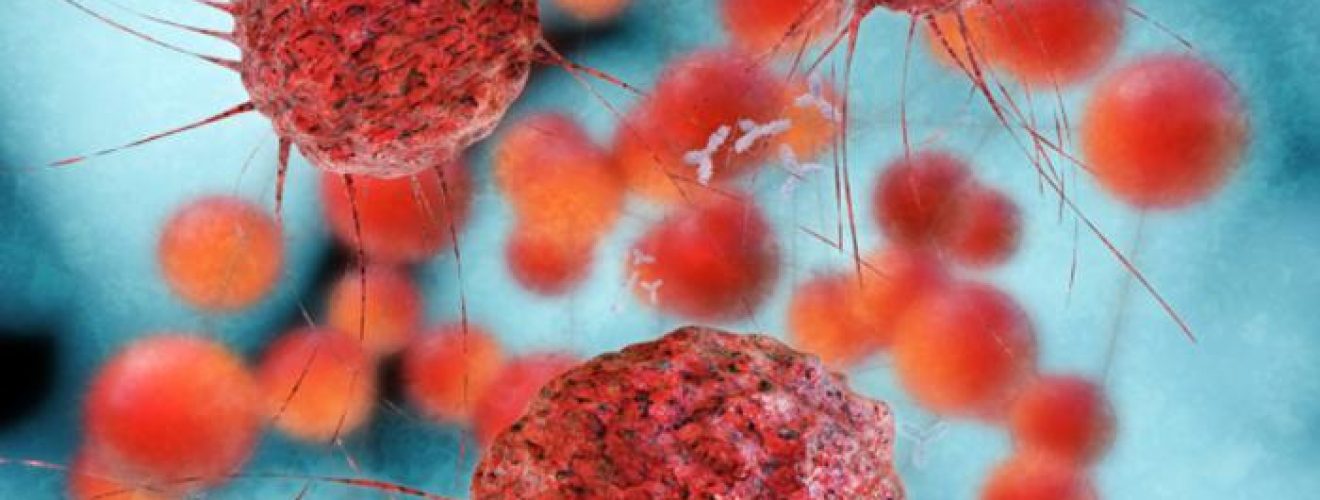The Hidden Weapon to Defeat Cancer

I like to think of our body as a society – probably because I’ve watched too many episodes of “Once Upon a Time… Life” – where each cell has a specific role, crucial for the regulation and maintenance of the body’s whole system. In the same way we have politicians, police, engineers, and scientists in our society, our body has neurons, bones, white blood cells, and muscles. Several of these societies can collaborate, enriching the system. For instance, we host different types of bacteria in our gut and on our skin which have a symbiotic relationship with our body. Each component is supposed to work in harmony. But sometimes our body is attacked by foreign bacteria or viruses, or worse – our own cells turn rogue and replicate out of control, creating a tumour.
The Constant Battle of our Immune System
Throughout our life, our body is constantly patrolled by the immune system – our own special security agency. The immune system consists of many types of cell – neutrophils, macrophages, T cells and B cells to name a few. Immune cells can recognise pathogens as well as distinguish between our own “good” and “bad” cells thanks to a specific molecule located on their surface, acting as a special detector. To be considered good, each cell must show specific markers on their surface – like a passport – which is scanned by the immune cells. In the case of cancer, the situation is a bit more complicated. A cell that acquires too many changes in its DNA – known as mutations – becomes a cancer cell and starts replicating uncontrollably. Some of these new cancer cells show the wrong passport on their cell surface. During this first phase, our immune system recognises these markers and destroys the cancer cells. However, if the solution was so easy cancer would not be the leading cause of death in UK in 20151.
Cancer becomes deadly because it has developed several strategies to avoid getting eliminated by the immune system. Scientists have discovered that during the initial phase when the tumour is recognised and destroyed by the immune system, some cancer cells randomly become resistant to immune reaction. For instance, some of them hide their markers or produce a substance called sialomucin all around their surface to remain unnoticed. This sialomucin acts like an invisibility cloak to fool the immune system into allowing the tumour to survive and continue replicating. Moreover, cancer cells can show molecules on their surface that interact with T cells and turn off the immune response2.
Cancer Immunotherapy
Now scientists are proposing solutions to help our immune system defeat cancer. All drug development based on this idea falls under a promising new therapeutic strategy – cancer immunotherapy. Although this is a hugely exciting development, it must be noted that it is not proposed as a catch all treatment. Not all tumours provoke an immune response, and this therapy has more chance of being successful with the types of tumours that are linked to a good initial immune reaction – tumours that are easily recognised by the immune system.
Several drugs are already on the market and just as many clinical trials are underway to improve their efficacy. Among others, two main categories of drugs are available: immunomodulatory antibody and adoptive T cells. The former are molecules that help the immune system to be more aggressive against the tumour or prevent the immune cells being fooled by the tumour. We will discuss adoptive T cells later on.
Researchers discovered that several mechanisms regulate the activation and deactivation of T cells. T cells are a type of white blood cells that play a central role in immunity. They contain receptors on their surface that recognise specific markers of a pathogen-infected cell or, in this case, cancer cells. These receptors, acting as switch on/off buttons, can be manipulated to control them. For instance, PD-1 is one of the switch-off buttons and cancers target this molecule to escape being killed by the immune system. They do so by using a protein called PD-L1 that interacts with PD-1, turning-off the immune cells. This allows the tumour to hoodwink the immune system and proliferate. Thus, scientists invented two anti-PD-1 molecules (immunomodulatory antibodies) that mask PD-1 on the surface of T cells. By hiding these crucial switches, the antibodies prevent the cancer deactivating the T cells. Therefore, the immune system is free to kill the tumour3.
These immunomodulatory antibodies have been used since 2014 to cure several types of cancers, such as advanced stage melanoma and lung cancer, and they are commercialised under the name of pembrolizumab and nivolumab. It is not just the T cells’ switch-off buttons that these treatments can target. Among the switch-on buttons is a OX40, a surface molecule that scientists are studying in the hope it can be used to boost tumour killing. Several clinical trials are underway to see if immunomodulatory antibodies that target OX40 could lead to better tumour regression and patient survival4 .
Latest Breakthroughs
But what happens if we combine an anti-PD-1 with another immunomodulatory antibody that targets OX40 to target the T cells’ on and off switches in parallel? Unfortunately, the combined use of these different drugs is something that still needs to be mastered. In scientific literature, scientists claim that the combination of drugs can have both beneficial or no effects – and sometimes even increasing side effects. Interestingly, a recent study in mice highlighted the fact that the exact order of drug administration can change the result of the experiment. A research group led by Dr Bernard A. Fox showed that when an anti-PD-1 drug is administered two days after a previous OX40-targeting treatment, the therapy is more efficient compared to when the researchers administered the two drugs in the opposite order, either at the same time or separately. This approach looks promising; however, we must be careful before putting too much faith in a treatment before scientists test its effects in humans5.
As mentioned earlier, another weapon used against tumours is adoptive T-cell therapy, which works in a different way from immunomodulatory antibodies. The most recent research in this area attempted to improve a specific type of adoptive T-cell therapy called CAR-T-cell therapy. Remember that special detectors are used by T cells to scan the ‘passport’ that each cell is showing? With CAR-T-cell therapy, scientists harvest T cells to genetically equip them with a special detector that can target a specific marker. For example, in the case of B cell lymphoblastic leukaemia, in which B cells are the bad guys, we can exploit the fact that only these B cells carry a marker on their surface called CD19. Through genetic modification, T cells can be created to specifically target and destroy any CD19 carrying cells. Last August, the FDA approved a new CAR-T-cell therapy to treat children affected by acute lymphoblastic leukaemia that had been unsuccessfully treated with intensive chemotherapy. Strikingly, this new therapy cured more than 80% of the patients6.
In some cases, as immunodeficient patients cannot give their own T cells, doctors must find an appropriate donor for a T-cell transplant to avoid rejection of the grafted cells. To overcome the risk of rejection, scientists can use a newly developed technique, called CRISPR-Cas9, through which they can genetically modify T cells, potentially coming from any donor, without having rejection problems. Hopefully, clinical trials will start soon to test the efficacy of this approach. This is just one example of how adoptive T-cell therapy could be used to treat the tumour types that possess a unique marker.
All these new therapies look fascinating. However, they bring with them a new set of side effects called immune-related adverse events. As we successfully stimulate the immune system to be more effective against tumours, we increase the chance that overpowered immune cells will damage other healthy organs and tissues. Most of the time, doctors can control these side effects without affecting the efficacy of the therapy. However, in some instances of immunotherapy treatment, physicians have reported severe side effects and even death. This clearly indicates that there is still much room for improvement.
The immune system is a great weapon which follows strict rules. By understanding and manipulating these rules, scientists have given us a possible cure for cancers previously thought to be untreatable. Undoubtedly, this discovery is going to save lives. I am incredibly excited to find out what the future of cancer treatment holds.
This article was specialist edited by Alisha Aman and copy edited by Kirsten Woollcott.
References
- Cancer Research UK, http://www.cancerresearchuk.org/health-professional/cancer-statistics/mortality/all-cancers-combined#ref-5
- Immune responses in cancer, Pharmacology & Therapeutics,Volume 99, Issue 1, July 2003, Pages 113-132
- https://en.wikipedia.org/wiki/Programmed_cell_death_protein_1
- https://clinicaltrials.gov/ct2/results?term=OX+40&cond=cancer&recrs=a&recrs=f&recrs=d&age_v=&gndr=&type=&rslt=&Search=Apply
- https://www.cancer.gov/news-events/cancer-currents-blog/2017/combining-checkpoint-inhibitors
- https://www.cancer.gov/news-events/cancer-currents-blog/2017/tisagenlecleucel-fda-childhood-leukemia










